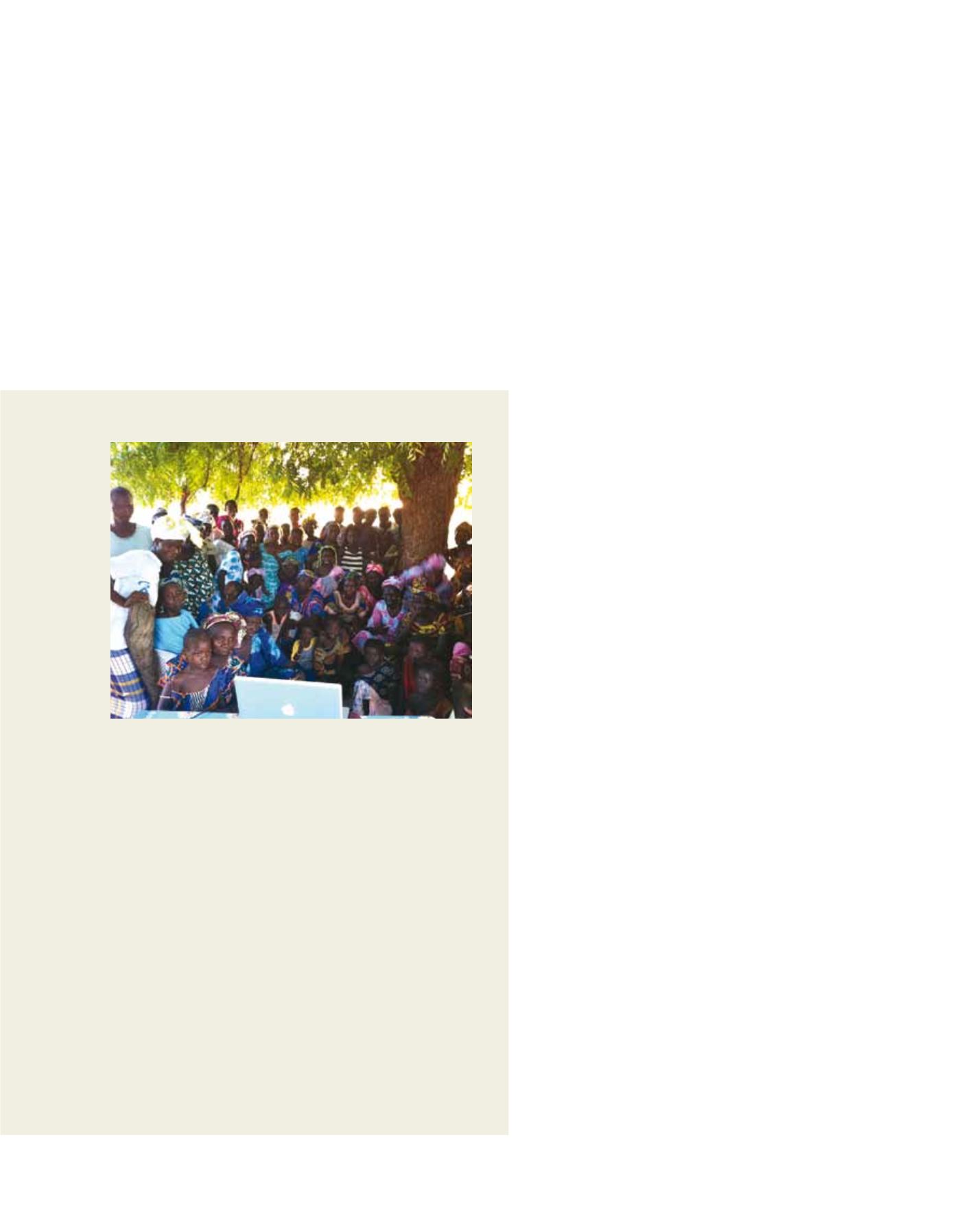

[
] 227
C
ommunities
sion-making. Each exchange has also included a technical review, to see
if there are additional sources of climate data and information that can
enable exchange activities to better meet users’ needs, as well as a number
of activities to support cross-exchange learning, including participation
of partners within one another’s demonstration studies and an end-of-
project workshop.
The exchange has already been able to demonstrate the following:
Increased ability for climate information to appropriately inform specific
decision-making processes in vulnerable communities
– In Kenya’s ‘short
rains’ of October, November and December 2011, based on a seasonal
forecast projecting an early start to the rains and arising in part from the
capacities developed within the exchange, farmers participating in the
SALI project in the Mbeere District planted early-maturing crop varieties
and/or deployed agricultural techniques that couldwithstand early cessa-
tion of the rains.
4
Farmers also used the forecast to make
decisions on the amount of crops to grow, for example,
whether to growmore or less sorghum or maize. It remains
challenging to fully understand the more quantitative
impact of increased access to, understanding and applica-
tion of seasonal and other forecasts on production, yields
and outputs in a way that reliably attributes this to forecasts,
given the multiple other facts that influence them. While
the project is working on the basis of a potential 10-20 per
cent yield effect, some of the participating farmers thought
the impact could be greater with a ‘good’ forecast. Further
livelihoods impacts resulting from the uptake of weather
and climate information are likely to emerge from ongoing
work and evaluation processes due to be undertaken.
Strengthened dialogue between climate scientists, humani-
tarian and development policymakers and community partners
– Each of the demonstration studies has included separate
initial questionnaires with both the providers and users of
climate information, to create a baseline of the current state
of climate science-user dialogue against which to measure
impact of exchange activities. Questionnaire findings have
made clear that both providers and users of climate informa-
tion recognize the need for, and welcome opportunities for,
strengthened dialogue. Informal feedback and questionnaire
findings have demonstrated that both community-based
and national workshops have often given vulnerable
communities and humanitarian policymakers their first
opportunity to directly discuss weather and climate infor-
mation with meteorological services and climate scientists.
The exchange activities have also provided climate scientists
with a rare, first-hand and contextualized understanding of
users’ climate information needs.
Creation of space for communities to come up with innova-
tive ways to support more effective dissemination of climate
information
– Community-based evaluation has made clear
the importance of revising the languages, format, channels,
content and media through which information is dissemi-
nated.Withmost communitymembers not having access to
the Internet, throughwhich themajority of climate informa-
tion is currently disseminated, communities participating in
the demonstration studies each came up with innovative,
gender- and age-specific suggestions for communicating
climate information, including via community leaders’
meetings, posters, faith networks, forecast blackboards and
a climate radio ‘road show’.
Development of channels to enable users’ climate information
needs to inform the focus of current and proposed research
–
The exchange offers the opportunity of making greater use
of humanitarian and development organizations and faith
networks as conduits for both the dissemination of climate
information and feedback to scientists on ways in which
climate services may better meet the needs of those most
vulnerable to climate impacts.
The information needs identified through the commu-
nity-based evaluation were considered within technical
consultations amongst exchange partners in order to iden-
tify areas where existing climate datamight better strengthen
the information currently available. This process identi-
fied data which are not currently being made available to
A memorandum of understanding signed in July 2011 between ANACIM
and the CRS supports the transmission of flood early warning information
at 72, 24 and three hours, as well as seasonal forecasts, to designated
community leaders in Kaffrine. Information is transmitted both directly
and via Red Cross volunteers to village chiefs, leaders of women’s
groups, representatives of agricultural cooperatives and community radio
broadcasters, who are then responsible for onward dissemination within
the community. Communities have used this information to make a range
of decisions regarding livelihood and personal security.
The study has shown that timely, relevant information can empower the
Kaffrine communities to be better prepared for hydrometeorological disasters.
Partnerships are needed at all levels – with communities and their needs firmly
at the centre – to put climate science at the service of communities at risk.
National and international partners are keen to secure the financial
support required to extend the national reach of the exchange approach in
Senegal, to comprise three key elements:
• Creating a framework for systematic and sustained dialogue between the
providers and users of climate information
• Developing the integrated climate services required to support
communities living in multi-hazard environments
• Identifying channels to develop and share learning about those forms
of dialogue which are most effective in supporting appropriate use of
climate information within different levels of decision-making.
Women in Malem Thierigne watching a video in the local language, Wolof,
summarizing the results of the Vulnerability and Capacity Assessment and ensuring
project activities are validated and owned by the community for 2011-2012
Image: A.Tall, 2011
















